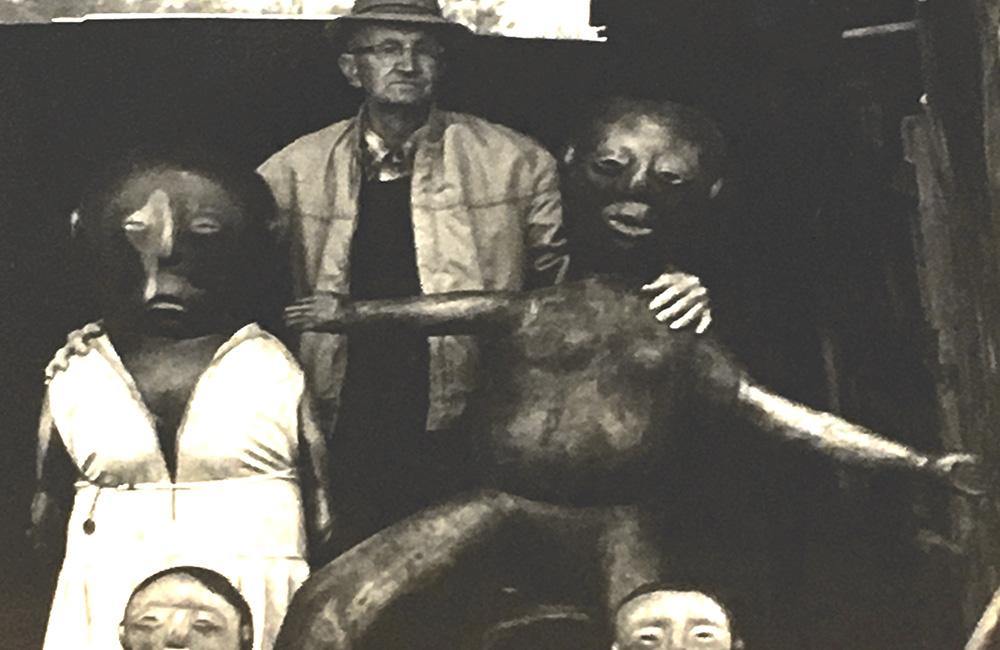First published: Summer 2019
Retired farmer and notable folk artist Raymond Coins created carvings inspired by his visions, dreams and faith
“You can’t come on Sunday – that’s the Lord’s Day. You can’t come on Saturday – the banks are closed. And you can’t come on Thursday – Ruby gets her hair done. And bring cash money.” So went my initial phone conversation with the artist Raymond Coins in 1986.
 Coins with artwork in woodshed, 1983, photo: Roger Manley
Coins with artwork in woodshed, 1983, photo: Roger Manley
Born on a small farm in the town of Stuart, in Patrick County, Virginia, in 1904, Coins (pronounced “Ko-ins”, in two distinct syllables) was of Scottish-American ancestry and came from a long line of poor, subsistence, mountain farmers. By the time he was ten, he had moved with his family to an area near Winston-Salem, North Carolina. His formal schooling ended in the fifth grade without him having learned to read or write (his wife later taught him to chisel “WR Coins” on his work) and he began working on farms in the area.
Coins married Ruby King in the mid 1920s, and they settled in Pilot Mountain, North Carolina, where he worked as a farmer. The couple were members of the Rock House Primitive Baptist Church and, in 1936, Coins assumed a position there as church deacon. His connection to his church was to become a major influence in his life and, subsequently, in his art.
In 1950, he and Ruby were able to buy a small farm of their own. They moved in with their three children, and for many years Coins grew crops, such as corn, oats, rye and wheat, and during the winter months worked as a floorman in tobacco warehouses. It was not until his retirement in the 1960s that his career as an artist began in earnest. Restless and bored, he began to fashion imitation Native-American arrowheads and tomahawks out of river stones and, in this way, discovered a new career. He once said, “I never knew a person who enjoyed himself working. But when I retired, I found that I do – because I can’t sit still.”
At first, Coins gave away his works or sold them at low prices. He was surprised to find out later that some had been passed off as authentic relics and sold at a profit: “I started makin’ tommy hawks an’ Indian bowls. I’d split me a hickory stick an’ put [the rock] on the stick an’ tie a leather string around it. Back at the time, I sold it for about five dollars. I sold one I know of, a fella kept it a year an’ sold it for one hundred dollars.”
As his confidence grew, Coins moved on to carving whatever was suggested to him in the natural shape of the stone. He said, “I check the rock, an’ pick out what I want out of it. I can jus’ about see the picture in there. Then take the chisel an’ axe, cut it down, then sand it.” (3) He created animals, such as frogs, bears, buffalo and deer, as well as human figures which he and Ruby sometimes dressed up. He began making his famous “doll babies” with their bulging features, protruding nipples and wing-like appendages. They resembled the Moai figures on Easter Island but, as the artist said, with their bald heads, they also looked like Coins himself.
This is an article extract; read the full article in Raw Vision #102




